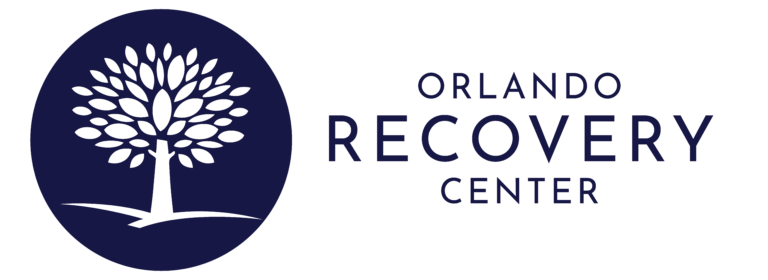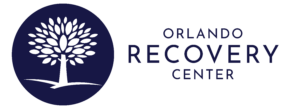There are a number of organizations – nonprofits, for-profits, and government agencies – that are dedicated to a better understanding of alcohol addiction and how it impacts the population.
Each one has contributed significantly to the growth and understanding of alcohol use disorders, including alcoholism, as a medical disorder and helped to identify the many different treatments and medications that are now available for use in treatment of alcohol-addicted individuals.
Here are a just a few of those organizations as well as some of the details of what they have contributed to the discussion of alcohol use, abuse, and treatment over the years.
National Institute of Alcohol Abuse and Alcoholism (NIAAA)
The National Institute of Alcohol Abuse and Alcoholism (NIAAA) is one of the country’s most valued resources when it comes to research on alcohol. One of the 27 organizations that are under the umbrella of the National Institutes of Health (NIH), NIAAA has been funding and conducting research on the impact that alcohol has on health and wellbeing for more than 40 years. In fact, it provides more funding for alcohol research than any other organization in the world.
Treatment Can Be Life Changing
Whether you are struggling with addiction, mental health or both, our expert team is here to guide you every step of the way. Don’t wait— reach out today to take the first step toward taking control of your life.
NIAAA focuses on:
- Epidemiological and genetic research with a focus on the prevention, treatment, and understanding of addiction
- Working with other organizations that have a similar focus
- Making available to the public, policymakers, and other interested parties the results of research from around the world on the subject of alcohol
- Removing the stigma associated with alcohol use disorders
On the last day of 1970, President Nixon signed the Comprehensive Alcohol Abuse and Alcoholism Prevention, Treatment, and Rehabilitation Act of 1970, which authorized a federal program to address the treatment and prevention of alcohol use disorders including alcoholism. First established as part of the National Institute of Mental Health (NIMH), it was made an independent organization within the National Institutes of Health in 1974.
The research conducted and supported by NIAAA in the past 40+ years has influenced legislation and policymaking, helped to shift the public perspective from viewing alcohol use disorders as moral failings to seeing the issues as medical disorders, and helped the substance abuse treatment and medical community better understand how to effectively treat these disorders. NIAA has contributed some of the following to our history:
- First national research workshop and government advisory on fetal alcohol spectrum disorders in 1977
- Institution of minimum legal drinking age in 1988
- Research study on the genetics of alcoholism starting in 1989
- The approval of naltrexone for treatment of alcohol cravings during detox in 1994 and later the implementation of a more effective injectable version in 2006
- Epidemiological studies on alcohol use across the country and how drinking impacts health disorders since 1991
- Increased focus on the effects of college drinking and underage drinking since 1998
The mission of the National Institute on Alcohol Abuse and Alcoholism is to lead an ongoing national fight to reduce problems related to alcohol use and abuse. They do this by:
- Funding and conducting a range of studies that focus on all aspects of the development, experience, and treatment of alcohol use disorders
- Working together with other federal programs and research organizations that are similarly focused on studying alcohol-related issues
- Working with other organizations to further their work in preventing or treating alcohol use disorders, and educating medical professionals, patients, and families about the condition
- Disseminating alcohol-related information to all those who would benefit from this knowledge, including other researchers, lawmakers, health care professionals, and the general public
There are a number of exciting new things happening at NIAAA all the time. New studies begin and end, and a range of projects are often underway at any given time. For example, recently, a new division of medications development was proposed, while NIAAA-supported scientists reported taking part in a National Institutes of Health (NIH) study that identified a gene variant that may be linked to compulsive drinking behaviors.
All the time, new studies are being released that help researchers and substance abuse treatment professionals as well as families of addicts to learn more about alcohol use disorders and the best interventions to address the problem and potentially reverse or stop the damage caused by heavy alcohol use.
National Council on Alcoholism and Drug Dependence, Inc. (NCADD)
The National Council on Alcoholism and Drug Dependence, Inc. (NCADD) is an organization dedicated to helping those who are in the midst of trying to overcome an alcohol use disorder or other substance abuse problem. NCADD offers those who are in need access to information that they need as well as connections to local resources where they can get the in-person treatment necessary to overcome alcohol use and addiction. There are close to 100 NCADD affiliates working on the community level across the country. They operate on the basis of the principle that all people who are struggling with alcoholism can be helped and that treatment can lead recovering alcoholics to healthy, fulfilling lives.
History
NCADD has been working to provide resources for alcoholics, addicts, and their families for almost 70 years. In fact, the founder, Marty Mann, was something of a pioneer in the burgeoning movement to recognize alcoholism as a disease; she was one of the early members of Alcoholics Anonymous (AA), and her sponsor was that organization’s co-founder, Bill W, in 1935.
In addition to connecting countless individuals struggling with alcohol and drug dependence with life-changing treatment and recovery in that time, NCADD has accomplished a number of landmark achievements as well. For example, NCADD sponsored Operation Understanding at the US bicentennial celebration that allowed more than 50 well-known former alcoholics to share their experiences of addiction and recovery on a large scale.
Additionally, NCADD founded the Employee Assistance Program concept that has been a beneficial resource in many American businesses and unions, and created a number of parent-focused resources empowering parents to help their children avoid drug and alcohol abuse, including a video narrated by Academy Award winning actress Meryl Streep called “What Should I Tell My Child About Drinking?
NCADD also played a role in the development of a number of key organizations that aid people in connecting with alcohol addiction treatment, including:
- Research Society on Alcoholism (RSA)
- National Nurses Society on Addiction (NNSA)
- Employee Assistance Professionals Association (EAPA)
- American Society of Addiction Medicine (ASAM)
Mission
The mission of NCADD is to fight the disorder that is alcoholism as well as its devastating effects and mitigate the harms caused to individuals, their families, and the communities in which they live. To achieve this mission, NCADD focuses on educating the public on the joys and benefits of recovery, working to remove the stigma and discrimination associated with alcohol use and addiction, and encouraging people who are living with the disorder to connect with the help they need.
Even their logo is focused on the power and hope of recovery: it depicts a medical caduceus, a key, and wings meant to represent the mythical Phoenix that rises up from the ashes of destruction to live again.
Today
Currently, NCADD is working to continue fulfilling its mission on every level and in every venue possible. Last year alone, NCADD served as many as 46 million individuals and families through services that include:
- Community education programs
- Taking information and referral calls (more than 730,000 in 2014)
- Community media campaigns regarding alcohol use, abuse, and treatment
- Family intervention services
- Drinking Driver Programs (DDP)
- Prevention services in the school and community
- Recovery support
- Advocacy and policy activities
Alcoholics Anonymous

Alcoholics Anonymous (AA) is an international organization that provides alcoholics in recovery with a safe place to meet, share, and work toward building a stronger life together without alcohol. AA is unique because it is not a professional group or organization but one that is completely supported by the people who take part in it. There are no requirements to attend meetings and no dues – nothing is required except the genuine desire to stay sober and support others in doing the same.
Members often utilize the Alcoholics Anonymous book – the Big Book – that was first published in 1939. They also often attend meetings regularly and work with a sponsor as they work through the 12 steps that are designed to help members better understand their use of alcohol and how they can manage their drinking habit and remain abstinent for the long-term.HistoryMissionToday
AA got its start in Akron, Ohio, in 1935 when two alcoholics, Bill W. and Dr. Bob, first met together with the goal of supporting one another in avoiding alcohol after a long career of active alcoholism. Bill W.’s involvement with an organization called the Oxford Group had helped him to get and stay sober. Dr. Bob had not been as successful in his experience with that group, but when he met Bill W. he was deeply impacted by meeting with someone who was also a former alcoholic but had done well for himself in sobriety. Bill W.’s emphasis on the concept of alcoholism as a disease of the body, mind, and emotions resonated with Dr. Bob, and both began working with other alcoholics. Slowly, different groups began to form – within four years, there were 100 sober alcoholics in three different groups in Akron, New York, and Cleveland.
The AA “textbook,” Alcoholics Anonymous, was written by Bill W. and published by the members in 1939. Soon after, the Cleveland Plain Dealer published an article series on AA, and within weeks, the Cleveland group was inundated with requests for help from alcoholics in need of healing. Within a few months, there were 500 members in the Cleveland group.
From there, AA grew rapidly. By the end of 1939, there were 2,000 members. In 1941, there were 6,000 members in the US and Canada. By 1950, more than 100,000 alcoholics claimed membership in AA, and the Twelve Traditions of Alcoholics Anonymous helped to solidify the philosophy of the group and its members. Since then, the membership has grown exponentially with groups and meetings happening regularly in almost every country in the world.
The mission of the all-voluntary membership of Alcoholics Anonymous is simply to stay sober and help others stay sober. Anyone who has a genuine desire not to drink is welcome to take part.
Alcoholics Anonymous has been proven to be a successful part of the treatment plans of many in recovery from alcoholism, according to Scientific American. As of 2011, there were reportedly more than 2 million members taking part in 115,000 groups around the world – about 50 percent of those groups and members are in the United States. With meetings in every major city and many small ones, often at all times of the day and night, AA meetings frequently help people as they transition from alcohol rehabilitation – programs that often include 12-step meetings as part of their treatment services – back to independent living in recovery.
Alcohol Rehab Is the First Step to Long-Term Recovery
Though these and many other organizations are dedicated to helping alcoholics and their families to learn more about the nature of alcoholism and the process of overcoming an alcohol use disorder, real healing begins with a comprehensive alcohol addiction treatment program. The care and treatment provided should be personalized to meet the needs of the individual and include access to any of the following services as needed:
- Detox: Medical care may be needed to assist the patient in managing withdrawal symptoms that often occur in the weeks immediately following the cessation of drinking.
- Traditional therapy options: Behavioral therapy, 12-step meetings, and group therapy sessions often form the foundation of treatment.
- Alternative therapy options: Depending upon the patient’s needs, a range of alternative therapies may be appropriate (e.g., art therapy, sports therapy, psychodrama, animal-assisted therapies, exposure therapy, and others).
- Holistic therapy options: Yoga, meditation, and other options often positively enhance the treatment experience.
- Family therapy and support: Family members can play a major role in a person’s recovery. Educational workshops, support groups, and family therapy are recommended.
- Aftercare and support: Continued engagement with treatment for long-term success is key to maintaining abstinence.
Learn more about the options available to you or your loved one in alcohol addiction treatment when you contact Orlando Recovery Center today.








